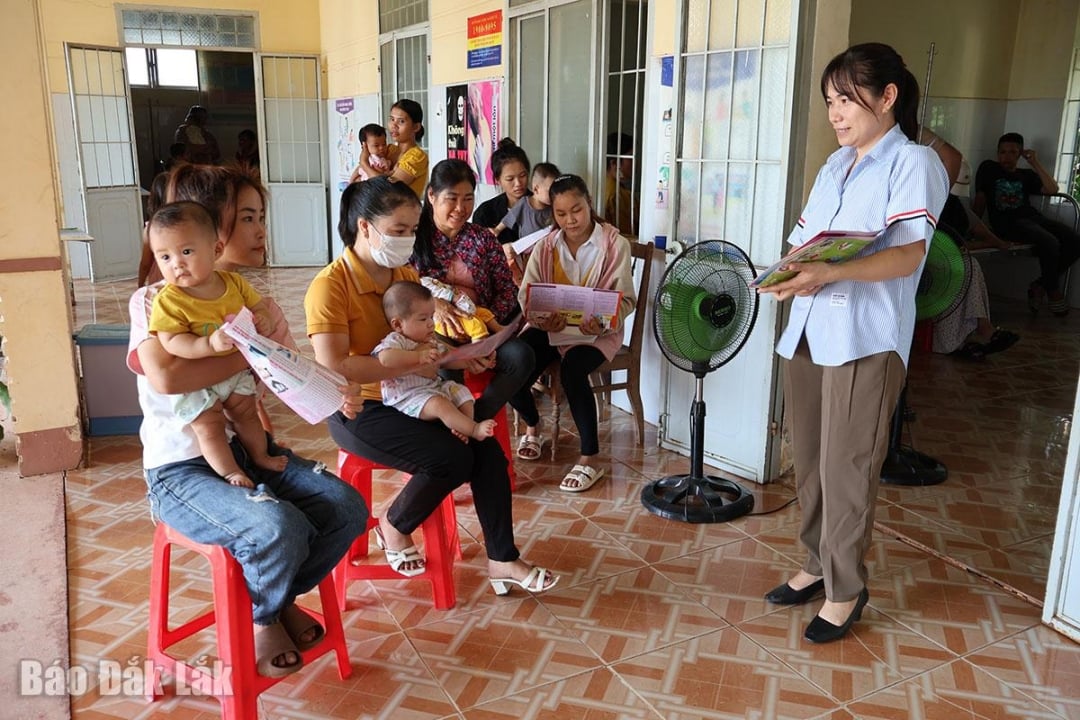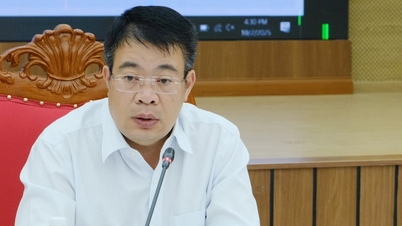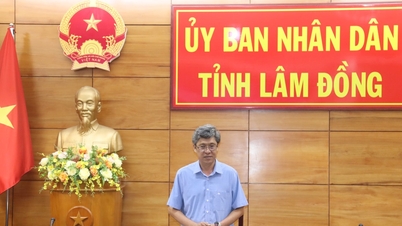The slogan “Whether girl or boy, two is enough” has existed for quite a long time in Vietnam’s population policy. In the context of the post-war population explosion, population policy and family planning is considered a “national task”, a strategic one to reduce the burden of social security and create conditions for sustainable development.
Thanks to the synchronous application of communication, advocacy and support measures for planned reproduction, Vietnam's birth rate has decreased sharply, people's quality of life has improved, and healthcare and education have improved significantly.
 |
| Training on premarital health examination counseling organized by the Department of Population and Family Planning in collaboration with Buon Ma Thuot University of Medicine and Pharmacy Hospital. Photo: Vo Thao |
However, entering a new stage of development, that policy gradually revealed its shortcomings. Vietnam is currently one of the countries with the fastest aging population in the region, while the birth rate has dropped to an alarming level in many places. Along with that is the imbalance in gender at birth, the pressure to have a son in some localities is still very heavy. Many young couples today also face the problem of rising child-rearing costs, heavy economic pressure, making them not interested in having more children.
The National Assembly Standing Committee’s official approval of the revised Population Ordinance, removing the provision that “each couple should only have one or two children”, is a necessary change. The State has now shifted from “managing the number” to a supporting and accompanying role. Couples have full rights to decide the number of children, the time of birth, and the interval between births, as long as it is consistent with their health, economic conditions, and ability to raise children.
As a province with many ethnic minorities living, with large differences between regions, Dak Lak faces a difficult problem when population policy changes. According to statistics, in recent years the locality still has a birth rate higher than the national average - a reality that is both a golden population opportunity and a challenge in ensuring quality of life.
 |
| Propaganda on population work - family planning at Ya To Mot Commune Health Station (Ea Sup District). Photo: Vo Thao |
As an expert with many years of experience in this field, Dr. H'Le Nie, former Head of the Population - Family Planning Department (Provincial Population - Family Planning Department) commented: "The new policy is correct, empowering people is necessary. But if the propaganda is not thorough, people can easily misunderstand that the State encourages having many children. That can lead to uncontrolled population growth, affecting the quality of life, increasing pressure on the health care system, education and poverty reduction efforts."
From promoting “birth control”, the grassroots population cadres now take on a more in-depth role in providing advice on reproductive health, supporting modern family planning, with a special focus on promoting prenatal and newborn screening… thereby helping people make responsible choices.
Deputy Director of the Department of Health Nguyen Trung Thanh emphasized: “We focus on in-depth communication with the message “Have enough children, raise them well”. “Enough” does not mean having one or two children, but the number appropriate to the actual conditions and real wishes of the family. Actively coordinate with relevant departments and branches to integrate population content into communication and counseling programs in the community, especially in remote areas, remote areas, and ethnic minority areas.
In the context of large regional disparities, increasing economic pressure, and traditional thinking that is not easy to change, the new policy is only truly effective when accompanied by specific, synchronous, and in-depth support solutions. Provincial authorities at all levels also recommended that the Central Government have specific support policies such as: investing more in the road system, schools, and medical stations in remote areas; exempting and reducing tuition fees and medical examination and treatment costs for children; strengthening preferential policies and capital support to help people escape poverty and become rich legitimately...
The removal of the regulation that “only one or two children should be born” does not mean letting things go, but is a big step forward in population management thinking, from administrative to humanistic. The change in thinking from management levels to each citizen will be the “key” for the new policy to enter life in a sustainable way, contributing to building happy, proactive, civilized families in the new era.
Source: https://baodaklak.vn/xa-hoi/202506/tu-ke-hoach-hoa-gia-dinh-sang-dan-so-va-phat-trien-cf111c4/



![[Photo] Binh Trieu 1 Bridge has been completed, raised by 1.1m, and will open to traffic at the end of November.](https://vphoto.vietnam.vn/thumb/1200x675/vietnam/resource/IMAGE/2025/10/2/a6549e2a3b5848a1ba76a1ded6141fae)







































































































Comment (0)